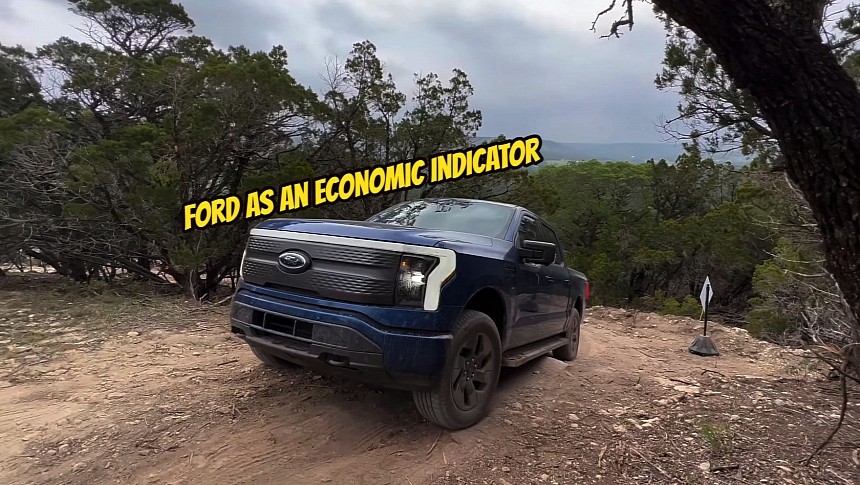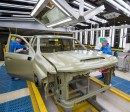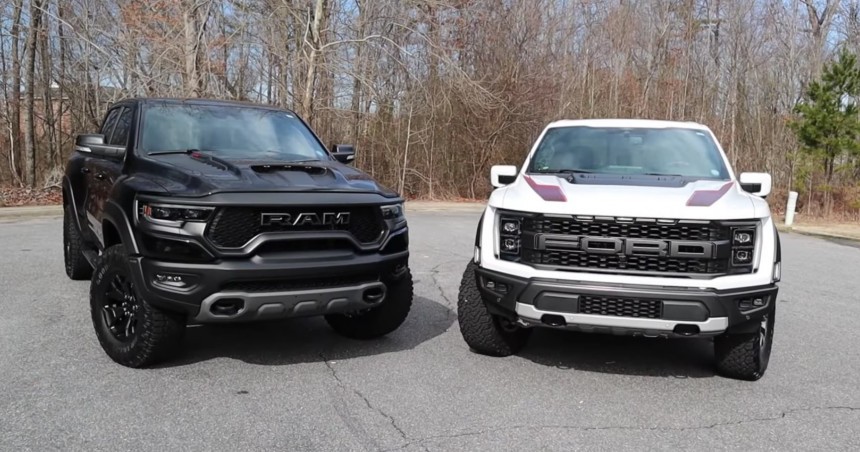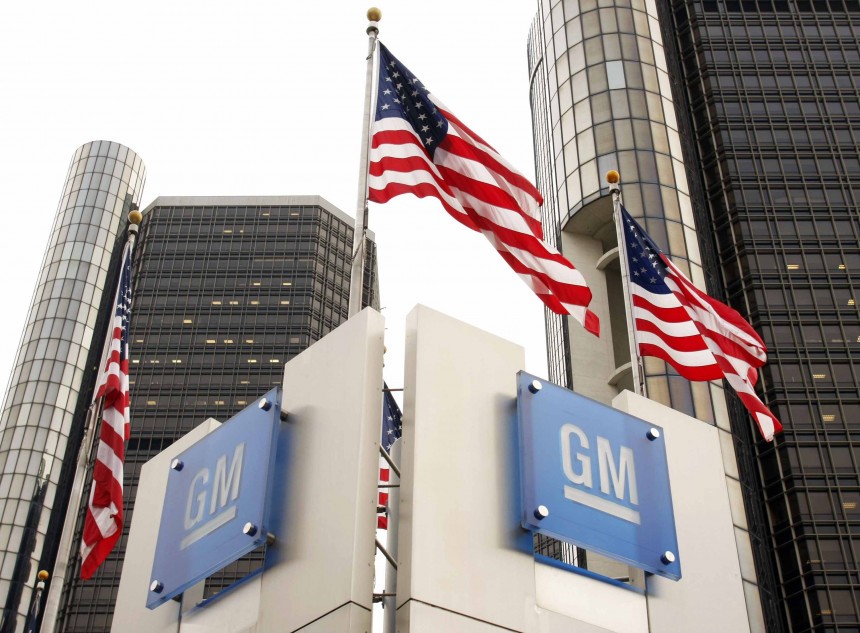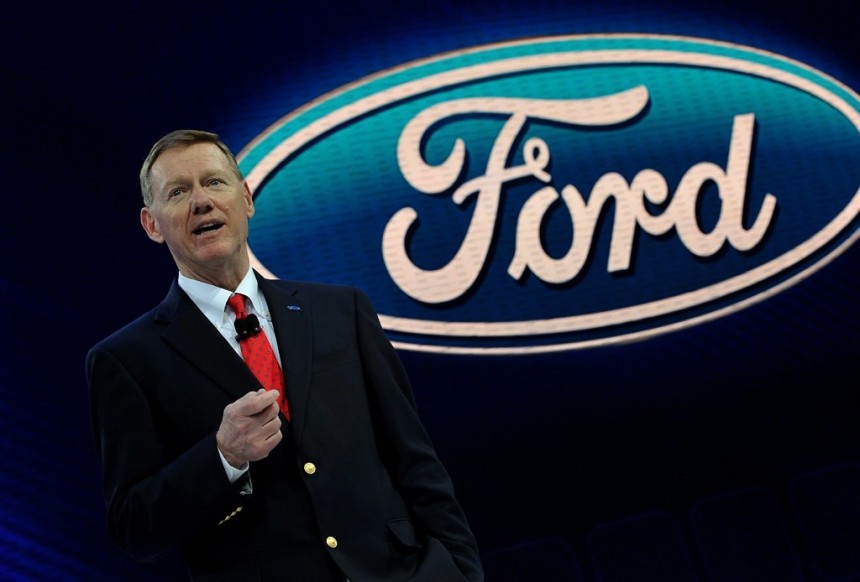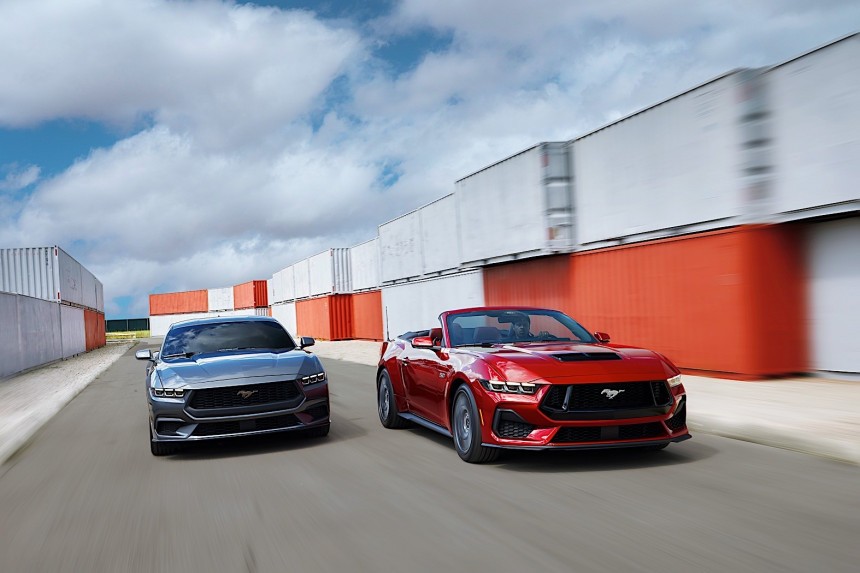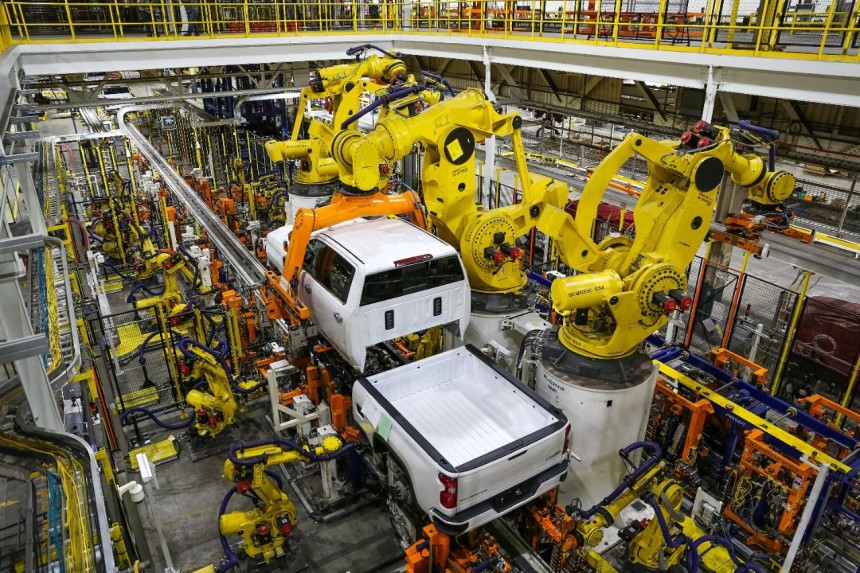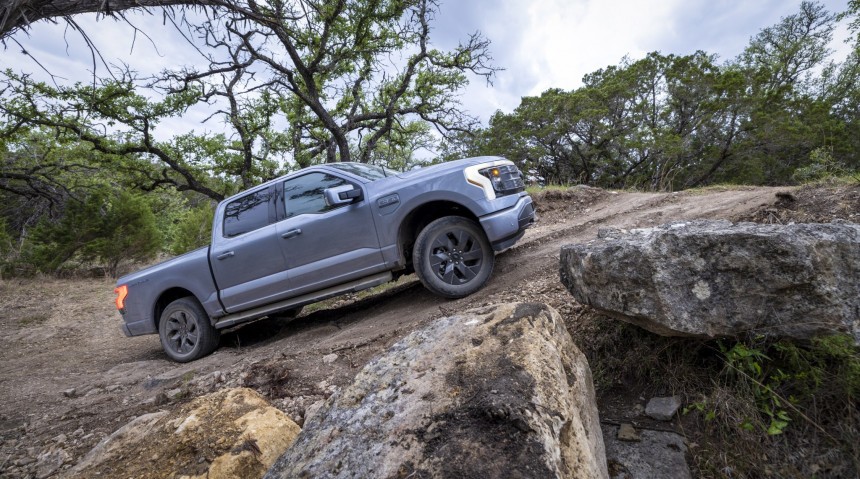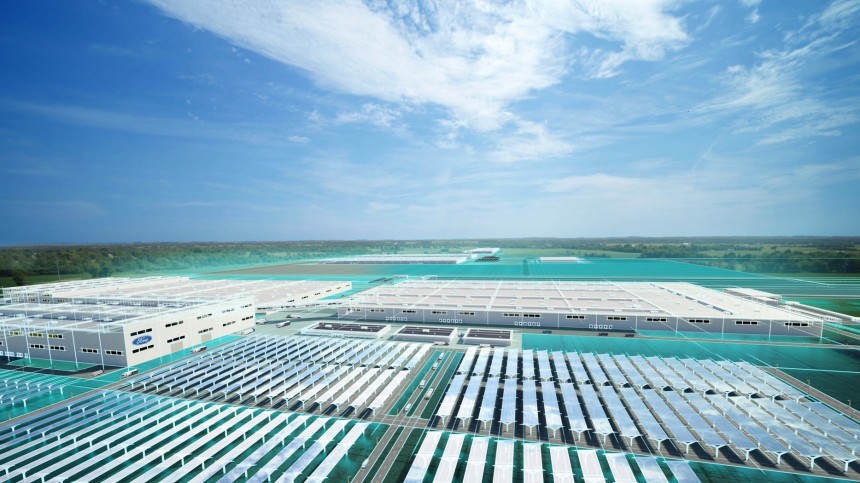Some people claim that we are headed into a recession that will culminate in a 2008-like financial crisis or worse. They are using Ford as an indicator for this claim alongside other data points. Let's see if they are right or wrong and what might soon happen.
In US history, Ford Motor Company occupies a special place. Besides introducing the five-day workweek and eight-hour workday (with eight hours for leisure and the remaining eight for sleep), the automaker was among the first big entities to consider reinvesting profit in employees and better machinery.
But the Dodge brothers argued as minority stockholders that it should not do so, sued Ford, and won after a prolonged three-year legal battle. The blue oval brand had to redistribute most of the profit to shareholders instead of rewarding its workers for helping the company achieve its goals. The case went all the way to the Supreme Court, which set a precedent that's somewhat still in use in today's corporate America.
The Dodge brothers also wanted to stop Ford from building another manufacturing plant, but the judges denied this request. They argued that another production facility would only create more shareholder value.
However, it's worth noting that a similar lawsuit would not have the same outcome today. Companies that wish to spend more on their workers will do so without being taken to court, and the Dodge v. Ford precedent has been refined over the years through other cases like the Shlensky v. Wrigley. But what remains true is that a company's end goal is to create more value for shareholders. If that's achievable through raising wages or introducing new benefits, then nobody can stop a corporation from doing it.
Thus, Ford's 120 years of existence is integral to the American way of life. But does that mean it can predict or understand the future better than others?
Everyone and their dog got a loan and bought houses left and right. But banks weren't worried about subprime lending because they sold repackaged mortgage-backed securities to unsuspecting investors. That turned into a bubble in 2005.
It popped three years later when hedge fund managers like Michael Burry made a fortune from shorting the American housing market. Then, the domino pieces fell one after the other.
General Motors, for example, filed for bankruptcy in June 2009, four years after losing profitability and just six months after it had already gotten a loan from the US federal government through the Troubled Asset Relief (TARP) program. The global financial crisis only accelerated its downfall.
Until its bankruptcy, General Motors received four loans from the US government and one from the Canadian executive branch. After the financial disaster was official, the American federal authorities pumped another $30 billion into GM. Even Germany got involved in helping save Opel, which was American-owned back then. Sweden's Koenigsegg bought Saab, while Penske Group acquired Saturn.
The US treasury eventually became a majority stakeholder in GM and lost $11.2 billion for bailing it out. The last taxpayer-owned shares of the automaker were sold in December 2013.
Meanwhile, Ford was minding its business and did (more than) okay in that troubling era without needing major government intervention.
He started by holding weekly meetings and conference calls with Ford bosses worldwide. The executive told them not to refer him to any aides when they had to make presentations or answer questions. Otherwise, they would risk dismissal.
The automaker's plant leaders were also tasked with finding solutions to streamline production. Eventually, Ford needed just nine core platforms to make all its vehicles. He also eliminated or trimmed many liabilities, including worker's pensions, and covered medical costs. About 75,000 employees got offers to retire early, and some executives even agreed to pay cuts.
That is what he called the "One Ford" approach. Besides ensuring everyone sticks together and involving workers in the company's mission, Mulally raised over $23 billion from banks, brought European operations to break even, and achieved profitability in 2009. As GM was dealing with bankruptcy, Ford made money thanks to aggressive reorganization before the financial crisis fully set in.
His legacy remains embedded in Ford because, even today, the company has taken similar actions. Five years ago, the automaker confirmed it would trim down North American sedans and hatchbacks in favor of crossovers, SUVs, and pickup trucks. It has kept this promise.
Today, the only new Ford sedan you can order in the US is the 2024 Mustang. The company is looking to create shareholder value and cannot do that without respecting its customers' wishes. People want high-riding, more spacious vehicles, so Ford's delivering them without incurring a loss on sedan or hatchback production.
Besides that, lengthy border checks, lockdowns, work limitations, and general uncertainty have brought supply chain issues, production delays, and increased business costs overall.
The automotive industry was especially hit by the massive virus spread around the world. As cars needed more and more chips because newer models boasted more technologies, chip plants (aka fabs) could not keep up with demand and source the necessary primary materials.
Moreover, automakers didn't have time to negotiate all the necessary contracts before the new reality of limited mobility set in, and it suddenly became a lot harder for entities like TSMC to make their customers happy.
But what was worse for car companies was that work from home became the new standard at a time when 5G was being rolled out in most markets, and everyone requested all sorts of new medical devices. So, the demand for electronics went through the roof. Thus, there weren't only negotiation mishaps that delayed semiconductor manufacturing but also increased competition between chip buyers.
Then, a war in Europe started. A bank crisis that seems to have been stopped in its tracks (for now, at least) also joined in on the fun.
And that's pretty much why it feels like we're spending most or all our monthly income just to make ends meet, unlike in the past year when Americans afforded to splurge from time to time.
Today's automotive sceneryis a mess
Companies must constantly adapt to the ever-changing economic environment to keep creating value for shareholders and, you know, exist. An excellent example in this respect is Tesla.
Last year, we anticipated that making a Model Y cost $70,000 before tax was a genius move. Not only did it allow the EV maker to obtain more profit from those willing to pay the new prices, but it also helped slow down production without making shareholders nervous. We told our readers to wait because it would work out.
Lo and behold, in late 2022 and early this year, prices dropped to their normal levels, despite high inflation. Today, a Tesla Model Y has an MSRP of $47,740. That's quite the discount!
Meanwhile, Ford is in a pickle. It must catch up to Tesla if it wants to survive in the EV-only era, but it also has to compete with the direct sales model popularized by the Texas-based company. Moreover, it must find a way to sell vehicles at a time when lending is being restricted, and rates are discouraging.
The Blue Oval recently applied a price cut of $10,000 to its first all-electric pickup truck, but the cheapest version of it (the F-150 Pro) cannot be bought today or until the end of 2023, for that matter. Meanwhile, Rivian's R1T is reaching an increasing number of customers, Chevrolet is rolling out the Silverado EV, and Tesla must start manufacturing the Cybertruck. Apparently, nearly two million buyers await the weird-looking EV.
But besides all these negatives, there's also a looming recession. Experts think we will experience at least a drawback, if not a full-blown financial crisis. Some even say that Ford's recent moves are anticipating that we will face adversity once again, and they believe it's a serious indicator.
But people are skeptical. They think Ford is getting ready for a financial crisis once again. But instead of going to the banks like last time, it just takes advantage of what the federal government offers.
While that's a valid concern during these trying times, there's little to no chance that's what's going on.
The current White House administration wants to keep the country in the pole position regarding innovation and mass production. China has been making significant progress in the EV sector and is the world's largest battery manufacturer. The Asian country doesn't need to invest a lot in exporting zero-tailpipe emission cars because it has a population of 1.4 billion. There are enough customers domestically. It's just making shy steps in parts of Europe, South America, and Asia.
This competition is also why we have a new EV tax credit. Introduced through the Inflation Reduction Act (IRA), the law sets many limitations regarding mining and production in the EV sector. They gradually get stricter over time, favoring America and its strategic partners. Plus, there are incentives for big corporations to move their manufacturing to the US.
Thus, there is nothing to worry about regarding Ford's newest loan from the Department of Energy. The company will use it with its South Korean partner to build three new factories. That will help the US to keep up with China in the EV and battery manufacturing domains. It's not an indicator of a looming financial crisis, even though we might end up having to deal with one.
And no, Jim Farley doesn't have to be the next Alan Mulally. The US government has already taken the necessary steps to avoid remaining behind its main competitors, and it's racing for the top spot together with America's most well-known companies and other established international brands.
But the Dodge brothers argued as minority stockholders that it should not do so, sued Ford, and won after a prolonged three-year legal battle. The blue oval brand had to redistribute most of the profit to shareholders instead of rewarding its workers for helping the company achieve its goals. The case went all the way to the Supreme Court, which set a precedent that's somewhat still in use in today's corporate America.
The Dodge brothers also wanted to stop Ford from building another manufacturing plant, but the judges denied this request. They argued that another production facility would only create more shareholder value.
However, it's worth noting that a similar lawsuit would not have the same outcome today. Companies that wish to spend more on their workers will do so without being taken to court, and the Dodge v. Ford precedent has been refined over the years through other cases like the Shlensky v. Wrigley. But what remains true is that a company's end goal is to create more value for shareholders. If that's achievable through raising wages or introducing new benefits, then nobody can stop a corporation from doing it.
Let's go back in time for a little while
Fast forward a few decades, and we find ourselves in the first month of 2009. That's when Ford reported a record loss of $14.6 billion for the previous year. The global financial crisis kicked off to a good start in 2008 and showed what greed can do to most of us.Everyone and their dog got a loan and bought houses left and right. But banks weren't worried about subprime lending because they sold repackaged mortgage-backed securities to unsuspecting investors. That turned into a bubble in 2005.
It popped three years later when hedge fund managers like Michael Burry made a fortune from shorting the American housing market. Then, the domino pieces fell one after the other.
General Motors, for example, filed for bankruptcy in June 2009, four years after losing profitability and just six months after it had already gotten a loan from the US federal government through the Troubled Asset Relief (TARP) program. The global financial crisis only accelerated its downfall.
The US treasury eventually became a majority stakeholder in GM and lost $11.2 billion for bailing it out. The last taxpayer-owned shares of the automaker were sold in December 2013.
Meanwhile, Ford was minding its business and did (more than) okay in that troubling era without needing major government intervention.
Follow the money
Ford CEO Alan Mulally decided to put the company through some changes before the financial crisis. Before joining the Blue Oval, Mulally was Boeing's chief executive and helped the airplane manufacturer to navigate the post-September 11 era. Thus, the man had the necessary know-how to take a company from hardship to the stars.He started by holding weekly meetings and conference calls with Ford bosses worldwide. The executive told them not to refer him to any aides when they had to make presentations or answer questions. Otherwise, they would risk dismissal.
That is what he called the "One Ford" approach. Besides ensuring everyone sticks together and involving workers in the company's mission, Mulally raised over $23 billion from banks, brought European operations to break even, and achieved profitability in 2009. As GM was dealing with bankruptcy, Ford made money thanks to aggressive reorganization before the financial crisis fully set in.
His legacy remains embedded in Ford because, even today, the company has taken similar actions. Five years ago, the automaker confirmed it would trim down North American sedans and hatchbacks in favor of crossovers, SUVs, and pickup trucks. It has kept this promise.
Today, the only new Ford sedan you can order in the US is the 2024 Mustang. The company is looking to create shareholder value and cannot do that without respecting its customers' wishes. People want high-riding, more spacious vehicles, so Ford's delivering them without incurring a loss on sedan or hatchback production.
Pessimism
The world is now facing economic adversities again after the international health crisis forced governments to take all sorts of inflationary measures. Remember the "stimmies" and the Paycheck Protection Program (PPP)? That's mostly why borrowing is now very expensive, and the Federal Reserve says it's not done with raising interest rates yet.Besides that, lengthy border checks, lockdowns, work limitations, and general uncertainty have brought supply chain issues, production delays, and increased business costs overall.
The automotive industry was especially hit by the massive virus spread around the world. As cars needed more and more chips because newer models boasted more technologies, chip plants (aka fabs) could not keep up with demand and source the necessary primary materials.
Moreover, automakers didn't have time to negotiate all the necessary contracts before the new reality of limited mobility set in, and it suddenly became a lot harder for entities like TSMC to make their customers happy.
But what was worse for car companies was that work from home became the new standard at a time when 5G was being rolled out in most markets, and everyone requested all sorts of new medical devices. So, the demand for electronics went through the roof. Thus, there weren't only negotiation mishaps that delayed semiconductor manufacturing but also increased competition between chip buyers.
And that's pretty much why it feels like we're spending most or all our monthly income just to make ends meet, unlike in the past year when Americans afforded to splurge from time to time.
Today's automotive scenery
Companies must constantly adapt to the ever-changing economic environment to keep creating value for shareholders and, you know, exist. An excellent example in this respect is Tesla.
Last year, we anticipated that making a Model Y cost $70,000 before tax was a genius move. Not only did it allow the EV maker to obtain more profit from those willing to pay the new prices, but it also helped slow down production without making shareholders nervous. We told our readers to wait because it would work out.
Lo and behold, in late 2022 and early this year, prices dropped to their normal levels, despite high inflation. Today, a Tesla Model Y has an MSRP of $47,740. That's quite the discount!
Meanwhile, Ford is in a pickle. It must catch up to Tesla if it wants to survive in the EV-only era, but it also has to compete with the direct sales model popularized by the Texas-based company. Moreover, it must find a way to sell vehicles at a time when lending is being restricted, and rates are discouraging.
But besides all these negatives, there's also a looming recession. Experts think we will experience at least a drawback, if not a full-blown financial crisis. Some even say that Ford's recent moves are anticipating that we will face adversity once again, and they believe it's a serious indicator.
Could Jim Farley be the next Alan Mulally?
The US Department of Energy recently announced that Ford was receiving a whopping $9.2 billion loan to build new electric vehicle (EV) factories and battery manufacturing plants. In 2009, the Blue Oval obtained a similar offer to make its gas-powered cars more efficient. However, it's important to note that it was a loan, not a taxpayer-sponsored bailout. The federal government made money off the deal. It didn't lose billions as it happened with GM for helping it survive.But people are skeptical. They think Ford is getting ready for a financial crisis once again. But instead of going to the banks like last time, it just takes advantage of what the federal government offers.
While that's a valid concern during these trying times, there's little to no chance that's what's going on.
This competition is also why we have a new EV tax credit. Introduced through the Inflation Reduction Act (IRA), the law sets many limitations regarding mining and production in the EV sector. They gradually get stricter over time, favoring America and its strategic partners. Plus, there are incentives for big corporations to move their manufacturing to the US.
Thus, there is nothing to worry about regarding Ford's newest loan from the Department of Energy. The company will use it with its South Korean partner to build three new factories. That will help the US to keep up with China in the EV and battery manufacturing domains. It's not an indicator of a looming financial crisis, even though we might end up having to deal with one.
And no, Jim Farley doesn't have to be the next Alan Mulally. The US government has already taken the necessary steps to avoid remaining behind its main competitors, and it's racing for the top spot together with America's most well-known companies and other established international brands.
